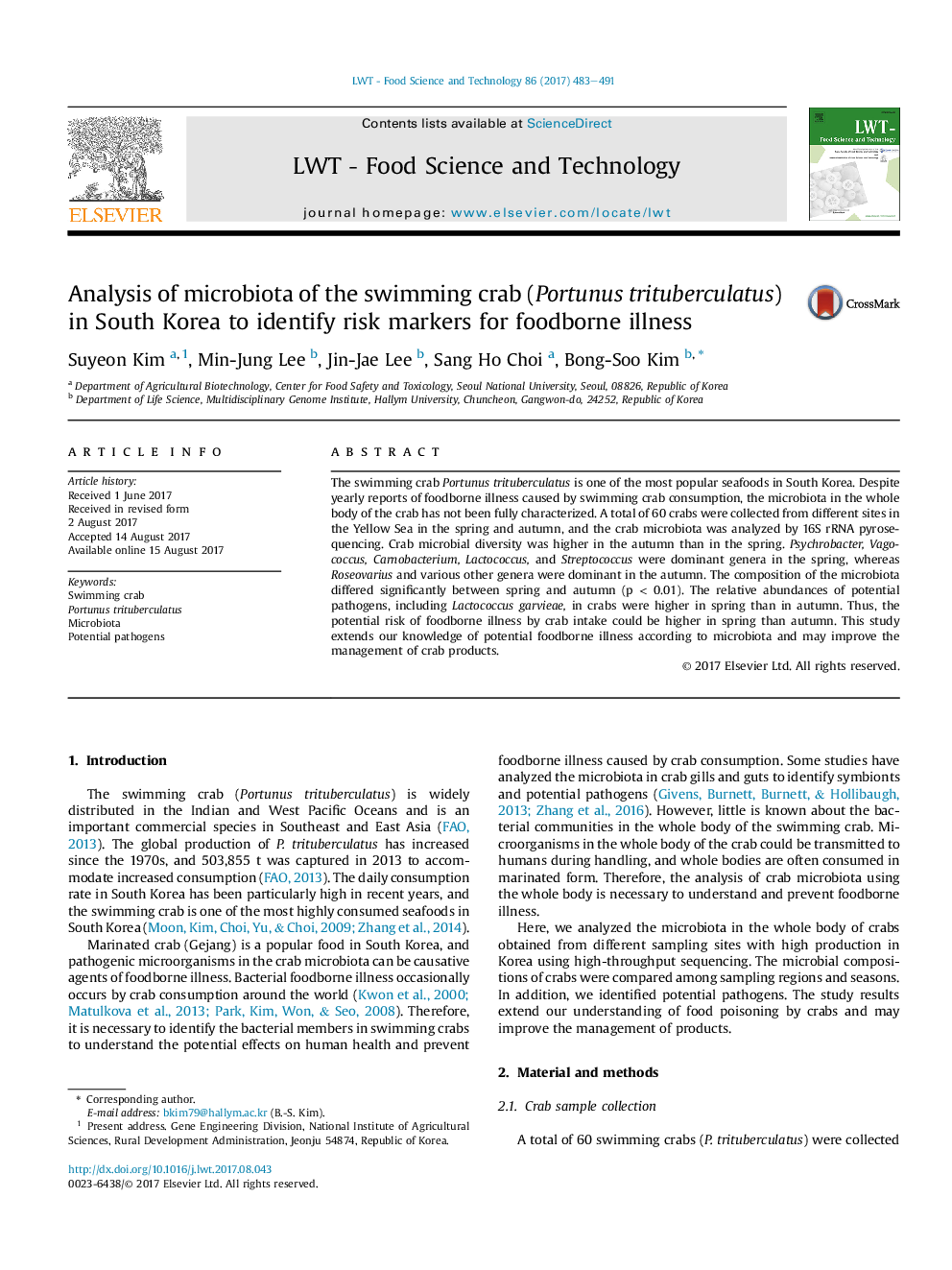| Article ID | Journal | Published Year | Pages | File Type |
|---|---|---|---|---|
| 5768712 | LWT - Food Science and Technology | 2017 | 9 Pages |
â¢The microbiota in swimming crabs in South Korea was analyzed.â¢The diversity and composition of the microbiota differed between spring and autumn.â¢The proportion of Lactococcus and Psychrobacter can be potential risk markers.â¢The risk of foodborne illness by crab intake is higher in spring than autumn.â¢Microbiota characteristics can inform the management of crab products.
The swimming crab Portunus trituberculatus is one of the most popular seafoods in South Korea. Despite yearly reports of foodborne illness caused by swimming crab consumption, the microbiota in the whole body of the crab has not been fully characterized. A total of 60 crabs were collected from different sites in the Yellow Sea in the spring and autumn, and the crab microbiota was analyzed by 16S rRNA pyrosequencing. Crab microbial diversity was higher in the autumn than in the spring. Psychrobacter, Vagococcus, Carnobacterium, Lactococcus, and Streptococcus were dominant genera in the spring, whereas Roseovarius and various other genera were dominant in the autumn. The composition of the microbiota differed significantly between spring and autumn (p < 0.01). The relative abundances of potential pathogens, including Lactococcus garvieae, in crabs were higher in spring than in autumn. Thus, the potential risk of foodborne illness by crab intake could be higher in spring than autumn. This study extends our knowledge of potential foodborne illness according to microbiota and may improve the management of crab products.
